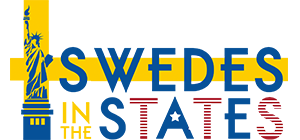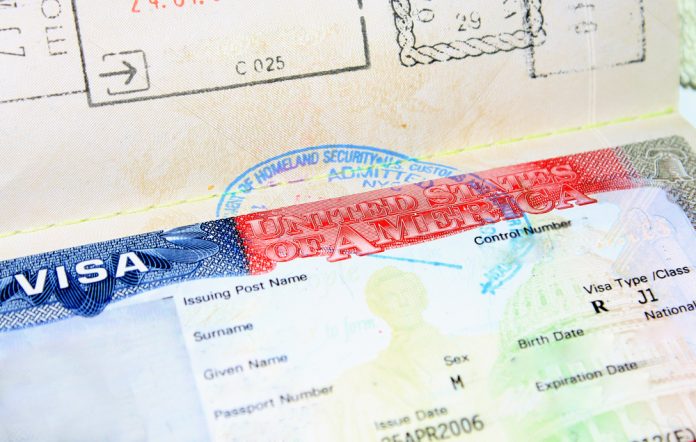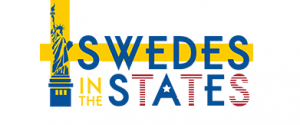It is easy to do an internship in the U.S. If you want to do an internship in the U.S, you need to obtain a J-1 Exchange Visitor visa. But first, you need to find an internship, either on your own or with the help of an organization such as the Swedish-American Chambers of Commerce, who lists internships and can help you get your visa.
To find an internship, you should search and actively apply for any position that interests you. Contact companies and organizations with your resume written in English ahead of time, usually several months prior to the date you wish to start you position. Take into consideration that the visa processing time is about 8-14 weeks, and that organizations usually accept applicants only for fall, spring and summer positions. However, once you agree with your host organizations on doing an internship there, you will need to obtain your J-1 visa.
With a J-1 visa you are able to:
- Participate in a structured and guided work-based learning program in an American business setting to gain firsthand experience of life and business in the United States.
- Write your Bachelor or Master´s theses for a U.S. company
- Participate in a trainee program at a mother company, subsidiary or business/joint venture partner in the U.S.
- You can find internships on your own or through organizations such as SACC-USA at: http://sacc-usa.org/trainee/positions/
- A visa sponsor, such as SACC-USA help candidates who have secured a training opportunity through their own listings as well as candidates who have found an internship or traineeship on their own.
Requirements for Intern Category:
- Be a Swedish or Finnish citizen/permanent resident with the intention of returning to Sweden or Finland
- Be at least 21 years old
- Be currently enrolled in and pursuing studies at a degree- or certificate-granting post-secondary (eftergymnasial) academic institution outside the U.S. or have graduated from such an institution within the past 12 months
- Be fluent in spoken and written English
- Obtain health and accident insurance for the duration of the training period
- Follow the training plan developed by the host company
- An internship may last up to 12 months.
Requirements for the Trainee Category:
- Be a Swedish or Finnish citizen/permanent resident with the intention of returning to Sweden or Finland
- Be at least 25 years old
- Have a degree or professional certificate from a post-secondary (eftergymnasial) academic institution outside the U.S. and at least one year relevant work experience in his or her field, OR
- No degree and at least five years relevant work experience in his or her field
- Be fluent in spoken and written English.
- Obtain health and accident insurance for the duration of the training period
- Follow the training plan developed by the host company
- A traineeship may last up to 18 months
To apply for a J-1 visa, you will need to:
- Obtain a Training/Internship Placement Plan (DS-7002) from a U.S. host company
- Obtain a Certificate of Eligibility for Exchange Visitor J-1 Status (DS-2019) issued by SACC-USA
- Present DS-2019 and DS-7002 at a personal interview at a U.S. Embassy
To be issued the DS-2019 document, you must send all necessary documentation and receipt of SEVIS fee to your visa sponsor. Your visa sponsor also needs the Internship/Training Placement Plan (DS-7002), Training Offer and service fee from the host company. You will not be able to book an appointment at the U.S embassy until the DS-2019 has been issued.
The waiting time for an appointment at the U.S. Embassy in Stockholm ranges from a few days to several weeks. July and August are usually the busiest months. Current waiting time is available on the U.S. Embassy website.
Fees and Costs
Visa Interview Fee
The trainee is required to pay a fee to the U.S. Embassy in Stockholm or Helsinki before the interview. The fee due to change over time so make sure to check the Embassy’s web page for current Exchange Visitor fee, http://sweden.usembassy.gov/consulate/niv/visa.html. Read the instructions carefully, including the information about paying the fee. An original receipt, stamped by the bank, should be brought to the interview at the embassy.
SEVIS Fee
The trainee is required to pay the so called SEVIS fee of $180. The SEVIS fee is paid directly to the Department of Homeland Security, https://www.fmjfee.com/. This payment is made online. Make sure to print a receipt to bring to the interview.
Insurance
The trainee candidate is required to have health and accident insurance that meets the requirements as you may find on SACC-USA’s website.
Compensation
The trainee or intern usually covers costs associated with travel, housing and living expenses but can often times also be covered by the host company to some extent. A Trainee Program Participant is allowed to receive compensation/stipend under a J-1 visa.
Many companies pay a stipend to cover living expenses but others may be unpaid. If you are Scandinavian, a good option is to do an internship with anyone of the 20 regional chambers of the Swedish-American Chambers of Commerce. Positions with SACC Regional Chambers are usually unpaid.
Internship for Academic Credit
To finance an unpaid internship, some Swedish Universities offer distance courses for academic credit (CSN-eligible). Find an internship and then you get it approved as a course of study. Unpaid positions may be best suitable for students who are required to do an international internship as part of their course work and thus can get a student loan.
Scholarships
There are good possibilities to seek and receive individual funding from external resources. Most scholarship foundations have some prerequisites about place of birth, heritage, etc. The best way to find these scholarships is for the trainee to contact the City or County Council or banks in your hometown or city of residence.
For official information regarding the J-1 Exchange Visitor visa, please visit: http://www.ustraveldocs.com/se/se-niv-typej.asp
For internships, visa sponsorship and guidance, please visit: http://sacc-usa.org/trainee/
F-1 Visa and Optional Practical Training
A second option for doing an internship in the U.S is for students on a F-1 visa. It is possible to receive up to 12 months of Optional Practical Training, referred to as OPT, if the employment is directly related to your major area of study.
Types of OPT
All OPT must be directly related to the student’s major area of study. Students may participate in OPT in two different ways:
Pre-completion OPT: F-1 students may apply to participate in pre-completion OPT after they have been enrolled in school for one full academic year. Students authorized to participate in pre-completion OPT must work part-time while school is in session. They may work full time when school is not in session.
Post-completion OPT: F-1 students may apply to participate in post-completion OPT after completing their studies. Students authorized for post-completion OPT may work part-time (at least 20 hours per week) or full-time.
Please Note: Practical training may be authorized to an F-1 student who has been lawfully enrolled on a full time basis for one full academic year at a college, university, conservatory, or seminary that has been certified by the U.S. Immigration and Customs Enforcement (ICE) Student and Exchange Visitor Program (SEVP) to enroll F-1 students. The “one full academic year” requirement may be satisfied while in another nonimmigrant category, not just while in F-1 status. Students may participate in OPT both before and after completing their studies. However, all periods of pre-completion OPT will be deducted from the available period of post-completion OPT.
STEM OPT Extension
Students who have earned degrees in certain science, technology, engineering and math (STEM) fields may apply for a 24-month extension of their post-completion OPT employment authorization if they:
Are an F-1 student who received a science, technology, engineering, or mathematics (STEM) degree included on the STEM Designated Degree Program List (PDF),
Are employed by an employer enrolled in E-Verify, and
Received an initial grant of post-completion OPT employment authorization based on their STEM degree.
Applying for OPT
Generally, if you are an F-1 student who wants to apply for OPT, you must:
Request that your designated school official (DSO) at your academic institution recommend the OPT. Your DSO will make the recommendation by endorsing your Form I-20 and making the appropriate notation in the Student and Exchange Visitor Information System (SEVIS).
Properly file Form I-765, Application for Employment Authorization with USCIS, accompanied by the required fee and the supporting documentation as described in the form instructions.





